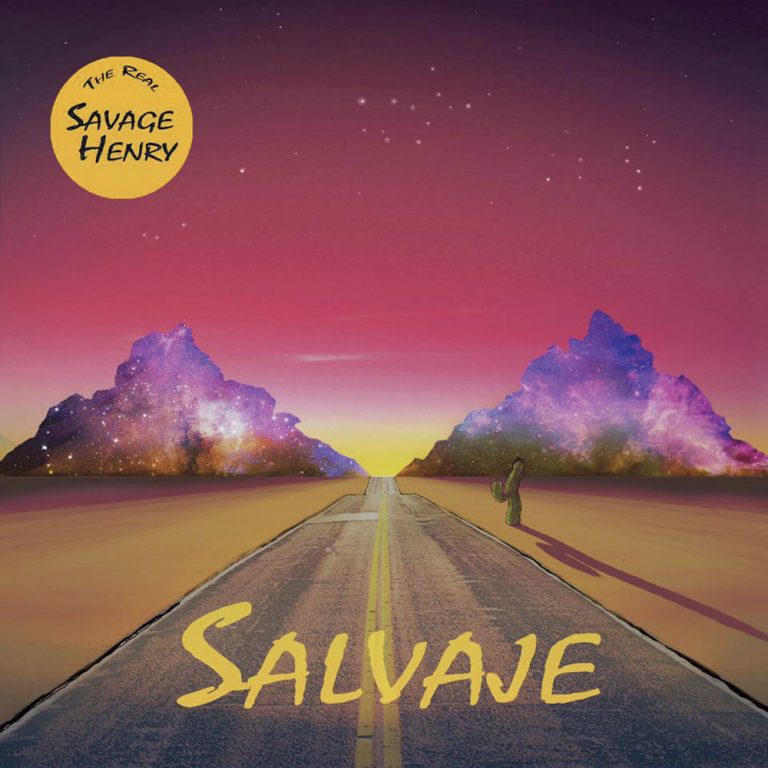
Ethan Jones
Notorious in backyards all over town and at their rehearsal space, The Savage Den, Isla Vista band The Real Savage Henry have cemented themselves as a big player in the local music scene. As of last Friday they made the push to go even further by putting out Salvaje (sal-vah-hey), an eight-song album, on Bandcamp and Spotify recorded at Hidden City Studios in downtown Santa Barbara.
“We’re at a point now where we’re all taking it very seriously,” said the group’s guitarist John Pagliassotti, a fourth year global studies major at the University of California, Santa Barbara, in an exclusive interview with The Bottom Line. This album exemplifies the band’s classic rock style, as well as their technicality and musicianship.
“We know we have so much music that we wanna get out there,” Andrew Maclnnes, a third year Santa Barbara City College political science major and keyboardist for The Real Savage Henry, said, “and we want to take every opportunity that comes to our door.”
Overall, the album was well done. It sounded incredibly legitimate as far as Isla Vista bands go. Their compositions shuffle between Led Zeppelin-esque riffs, jazz fusion sections, and cleaner folk-sounding finger-picked intros. Although I felt a majority of their songs didn’t diversify too far outside of their style, they played everything well.
The intro song, “No Love Here No How,” shows the range of dynamics within the band’s sound. Starting off with spacey synthesizers and a cutting blues riffs, the song gets funkier as it progresses, with a lively bass behind synth piano and laid back guitar. Its influences from other artists are heavy, but at the same time it is very original. The song flows smoothly between laid back verses, the heavy riff-based choruses, and synchronized sections where the band can show off their technicality.
In my opinion, “Tar Pits” was the best song on the album. Starting off restrained with a clean finger-picked intro, the song eventually centers around a rhythmic guitar line, which works well with singer/bassist Wylder Kheke’s vocals. Maclnnes’s use of the organ worked gave the track a sense of fullness during the chorus sections. “Tar Pits” best utilized the band’s devices and talents, sticking out compared to other tracks on this album.
“Goodnight Blues” is a simple composition but allows for everyone to show off their musicianship. Kheke’s bassline was jumpy, ascending high and adding an upbeat feel to the track. Constant soloing by the other band members (especially drummer Will Hettle) captured the expressive atmosphere they put together for their live performances.
Pagliassotti was quick to name bands like “[Led] Zeppelin, Steely Dan, and [guitarist] Jeff Beck” as being very influential to the album. Anyone familiar with those artists could easily hear the similarities in this release, but the process extended further than that. “We all have, like, our own niche of music,” Maclnnes said, “and we all apply that differently to our songs.”
Though the songs exemplified musicianship, they didn’t diversify tone or melody too much. There could’ve been more solid hooks and singable melodies. Their sound isn’t necessarily generic, but it seems to be confined to traditional rock devices such as blues scales, soloing, and upbeat tempos. I’d challenge them to try going farther out of their comfort zone. At the same time, what they do, they do well from a technical aspect.
Excited for what that future entails, Pagliassotti said, “We’re already brainstorming the tracklist for Savage Henry II.” As far as the near future, they’re playing at Woodstock’s on Friday, the following Saturday at the Savage Den, and at SOhO in downtown Santa Barbara on Feb. 3.
“We’ve definitely been getting a lot of opportunity,” said Hettel, a fourth year physics major at UCSB, “enough for us to be optimistic about our future.”










